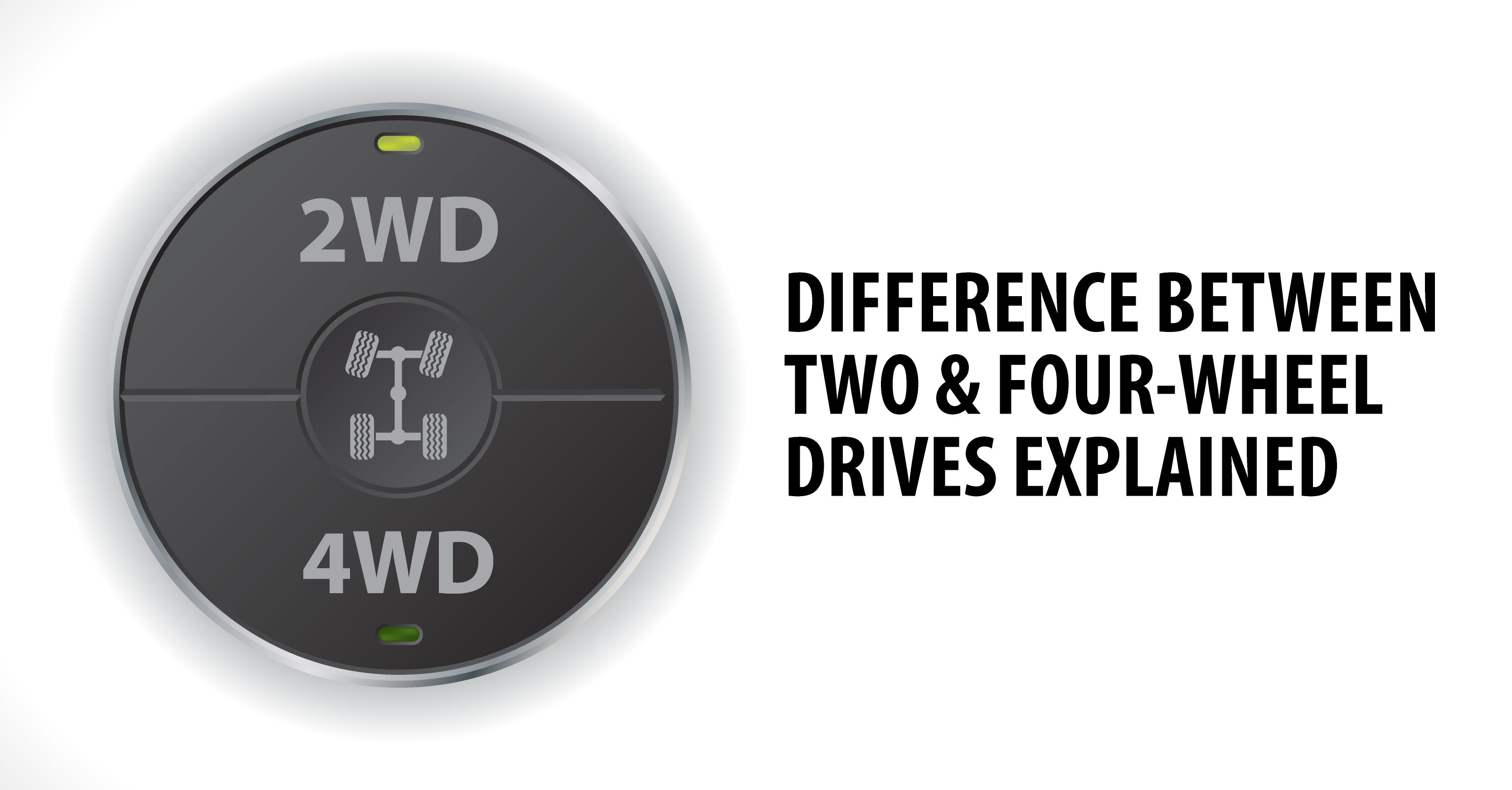Shopping for a new four-wheeler in today’s times may be a tough task considering all the technology and features loaded in them. Ranging from advanced driver assistance systems to built-in hands-free cruise mode, there’s a lot to think about. If you, like many others, are stepping out of your comfort zone while making this purchase, learning the difference between the common drivetrain options will help you find the car type that’s truly perfect for your current lifestyle.
We’ve listed down the differences and perks of drivetrains for 2, 4 and all wheel drives below, so you can learn about its mechanism and pick the one that fits the performance you desire.
TWO WHEEL DRIVE
Most passenger vehicles today come with a standard two-wheel drive (2WD), which means that the engine powers only two of the vehicle’s wheels and the other two spin with motion. Compared to their four & all-wheel drive counterparts, they are lightweight and can pull on load, helping you save on fuel. These are relatively cheaper as well because of its lower production costs. 2WD cars traditionally come with setups for front-wheel drive (FWD) or rear-wheel drive (RWD). This in simple words means the power is directed intentionally to either the front or back duo, which cater to different needs. Let us compare and breakdown both the systems.
● Front Wheel Drive
Fuel-efficient front wheel drives power the front wheels as the name suggests. Since the transmission is placed below the engine, the weight is balanced directly on the front wheels which provides better traction when you take your car uphill or are driving in slippery terrains such as mud or snow-covered roads. Majority passenger vehicles on road are equipped with front wheel drives as they are cheaper to manufacture and more space-efficient than rear-wheel drives.
● Rear Wheel Drive
The hulk mechanism that powers sports cars, pickup trucks, luxury sedans and once a common phenomenon in older SUVs, pulls with great strength. In a rear wheel drive, the weight is transferred to the back of the vehicle when you hit the gas pedal, giving you quicker and powerful initial acceleration. The initial section of your car is not loaded with weight and is easy to steer. Unlike the front wheel drive, the RWD tends to have a more evenly distributed weight on both ends, improving the balance and overall performance. This mechanism therefore works wonders to pull heavy-duty and bulky components suited for pick-up trucks, maintains a steady balance in high-speed performance cars, optimising the suspension for handling prowess.
FOUR WHEEL DRIVE
What was once meant for heavy vehicles and pickup trucks, is now increasingly popular in SUVs and crossovers. Going a few steps further from the push and pull mechanism, four-wheel drives engage all four wheels at all times. This helps to give the driver maximum control and traction on uneven terrains which allow all axles to turn in different directions at different speeds. While this system can be put to great use by off-road enthusiasts, most drivers do not feel the need to engage all four wheels, consistently. Hence, modern 4WD mechanisms are either full-time, automatic and part-time which require a manual shift.
ALL WHEEL DRIVE
If you’ve always believed 4WD and all-wheel drive (AWD) were one and the same, it's because both the terms are often used interchangeably, but there’s a difference. All wheel drive is powered by a computer system that automatically feeds power to each corner, according to the real-time requirement. In most scenarios AWD delivers power primarily to one set of wheels, front or rear. When pressure increases on one axle, the power is diverted to the other to optimise traction.
Unfortunately, no one answer fits all. It varies according to your lifestyle, terrains and driving habits, but having complete knowledge about these systems will help you make the right choice. Once you are clear about the car you wish to buy, we at Kuwy, provide the perfect match curated to your needs with easy finance ensuring you don’t have to wait any further to get your hands on the wheels!




